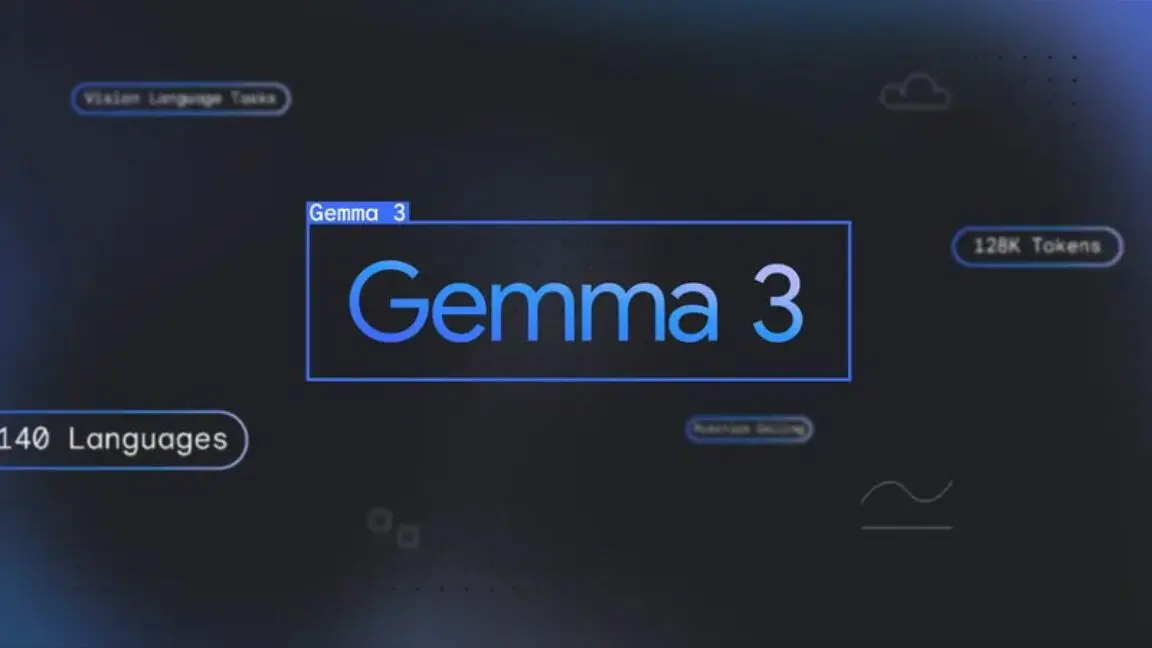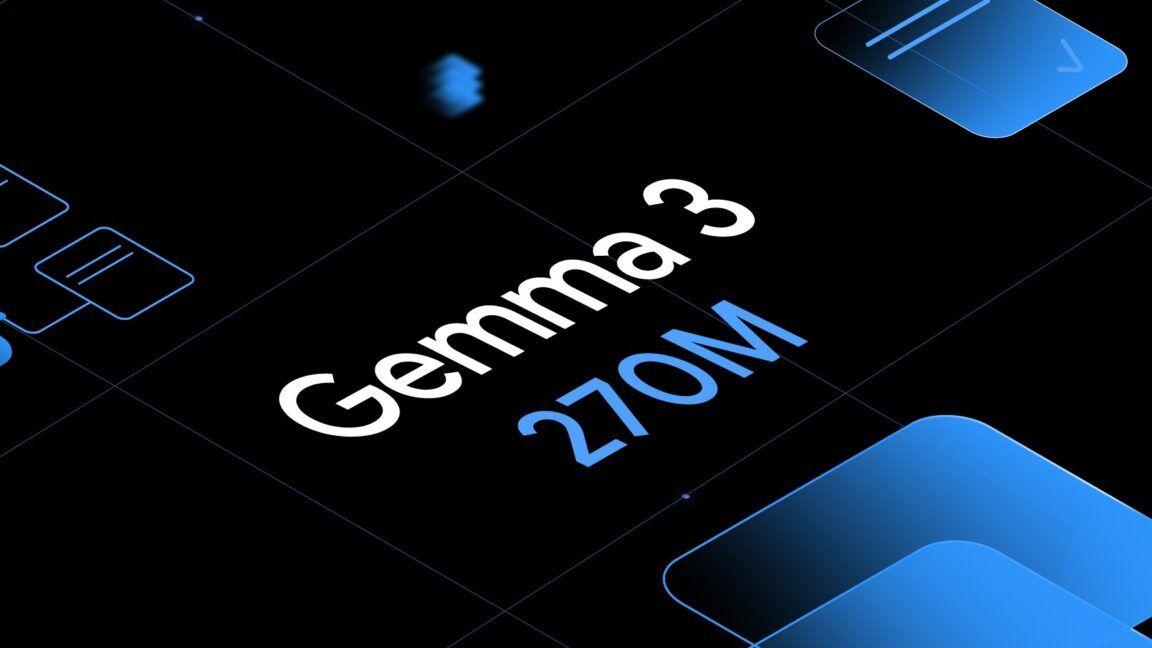Google Unveils Enhanced Gemma LLMs: Smaller, Safer, and More Powerful
2 Sources
2 Sources
[1]
Google's lightweight Gemma LLMs get smaller, but they perform even better than before - SiliconANGLE
Google's lightweight Gemma LLMs get smaller, but they perform even better than before Google LLC is advancing its efforts in open-source artificial intelligence with three new additions to its Gemma 2 family of large language models, which it said are notably "smaller, safer and more transparent" than many of their peers. The company released its first Gemma models back in February. They're different from its flagship Gemini models, which are used in the company's own products and services and are generally considered to be more advanced. The main differences are that the Gemma models are much smaller and fully open-source, meaning they are free to use, whereas the Gemini family models are bigger and closed-source, so developers must pay for access. ' The Gemma models are based on the same research as the Gemini LLMs, and represent Google's effort to foster goodwill in the AI community, similar to how Meta Platforms Inc. is doing the same with its Llama models. Of the three new models announced today, the most important is Gemma 2 2B, which is a lightweight LLM designed for generating and analyzing text. According to Google, it's designed to run on local devices such as laptops and smartphones, and it is licensed for use in research and commercial applications. Although Gemma 2 2B contains just 2.6 billion parameters, Google said it demonstrates performance that's on a par with, and sometimes even superior to much larger counterparts, including OpenAI's GPT-3.5 and Mistral AI's Mistral 8x7B. To back up its claims, Google published the results of independent testing by LMSYS, an AI research organization. According to LMSYS, Gemma 2 2B achieved a score of 1,126 in its chatbot evaluation arena, surpassing Mixtral-8x7B, which scored 1,114, and GPT-3.5-Turbo-0314, which scored 1,106. The results are impressive, as the latter models have almost ten-times more parameters than the latest edition of Gemma. Google said Gemma 2 2B's capabilities extend beyond size efficiency, as it scored 56.1 on the Massive Multitask Language Understanding benchmark, and 36.6 on the Mostly Basic Python Programming test, improving on the score of earlier Gemma models. The results challenge the idea in AI that larger parameter size equates to better performance. Instead, Gemma 2 2B shows that by employing more sophisticated training techniques and using superior architectures and higher-quality training data, it's possible to compensate for a lower number of parameters. Google said its work could help initiate a shift by AI companies, away from a focus on building ever-larger models. Instead, it could lead to AI model makers focusing more on refining existing models to make them perform better. In addition, Google said Gemma 2 2B also illustrates the importance of using model compression and distillation techniques. The company explained that Gemma 2 2B was developed by distilling the knowledge from much larger models. It hopes that progress in this area will enable the development of more accessible AI with reduced computational power requirements. The other, more specialized models announced by Google today include ShieldGemma, which is actually a collection of safety classifiers designed to catch toxic responses such as hate speech, harassment and sexually explicit content. ShieldGemma is built on top of the original Gemma 2 model, and can be used by developers to filter malicious prompts that encourage models to respond in an undesirable way. It can also be used to filter the actual responses of LLMs. Finally, Gemma Scope is an attempt to bring greater transparency to the Gemma 2 models. It does this by zooming in on specific parts of the Gemma 2 models, helping developers to interpret their inner workings. "Gemma Scope is made up of specialized neural networks that help us unpack the dense, complex information processed by Gemma 2, expanding it into a form that's easier to analyze and understand," Google wrote in a blog post. "By studying these expanded views, researchers can gain valuable insights into how Gemma 2 identifies patterns, processes information and ultimately makes predictions." Gemma 2 2B, ShieldGemma and Gemma Scope are all available to download now from sources including Hugging Face.
[2]
Google releases new 'open' AI models with a focus on safety | TechCrunch
Google has released a trio of new, "open" generative AI models that it's calling "safer," "smaller" and "more transparent" than most -- a bold claim, to be sure. They're additions to Google's Gemma 2 family of generative models, which debuted back in May. The new models, Gemma 2 2B, ShieldGemma and Gemma Scope, are designed for slightly different applications and use cases, but share in common a safety bent. Google's Gemma series of models are different from its Gemini models in that Google doesn't make the source code available for Gemini, which is used by Google's own products as well as being available to developers. Rather, Gemma is Google's effort to foster goodwill within the developer community, much like Meta is attempting to do with Llama. Gemma 2 2B is a lightweight model for generating analyzing text that can run on a range of hardware, including laptops and edge devices. It's licensed for certain research and commercial applications and can be downloaded from sources such as Google's Vertex AI model library, the data science platform Kaggle and Google's AI Studio toolkit. As for ShieldGemma, it's a collection of "safety classifiers" that attempt to detect toxicity like hate speech, harassment and sexually explicit content. Built on top of Gemma 2, ShieldGemma can be used to filter prompts to a generative model as well as content that the model generates. Lastly, Gemma Scope allows developers to "zoom in" on specific points within a Gemma 2 model and make its inner workings more interpretable. Here's how Google describes it in a blog post: "[Gemma Scope is made up of] specialized neural networks that help us unpack the dense, complex information processed by Gemma 2, expanding it into a form that's easier to analyze and understand. By studying these expanded views, researchers can gain valuable insights into how Gemma 2 identifies patterns, processes information and ultimately makes predictions." The release of the new Gemma 2 models comes shortly after the U.S. Commerce Department endorsed open AI models in a preliminary report. Open models broaden generative AI's availability to smaller companies, researchers, nonprofits and individual developers, the report said, while also highlighting the need for capabilities to monitor such models for potential risks.
Share
Share
Copy Link
Google has released updated versions of its Gemma large language models, focusing on improved performance, reduced size, and enhanced safety features. These open-source AI models aim to democratize AI development while prioritizing responsible use.

Google's Gemma LLMs: A Leap Forward in AI Technology
Google has made significant strides in the field of artificial intelligence with the release of its updated Gemma large language models (LLMs). These new versions represent a notable advancement in AI technology, offering improved performance in a more compact package while emphasizing safety and responsible use
1
.Smaller Size, Greater Efficiency
The latest iterations of Gemma LLMs have been optimized for efficiency, with models now available in even smaller sizes. This reduction in size does not come at the cost of performance; on the contrary, these compact models demonstrate enhanced capabilities compared to their predecessors. The smallest model in the lineup now requires just 1.5 billion parameters, a significant decrease from the previous versions
1
.Improved Performance Across the Board
Despite their reduced size, the new Gemma models showcase improved performance across various benchmarks. Google reports that these models now outperform many larger language models in tasks such as reasoning, math, and coding. This achievement underscores the effectiveness of Google's optimization techniques and the potential for more efficient AI models in the future
1
.Focus on Safety and Responsible AI
A key aspect of the Gemma update is the emphasis on safety and responsible AI development. Google has implemented new safety measures and guidelines to ensure that these powerful tools are used ethically and responsibly. This focus aligns with growing concerns about the potential misuse of AI technology and the need for robust safeguards
2
.Open-Source Approach
Google continues to maintain an open-source approach with the Gemma models, making them freely available to researchers, developers, and businesses. This strategy aims to democratize AI development and foster innovation across the industry. By providing access to these advanced models, Google hopes to accelerate progress in AI research and applications
2
.Related Stories
Implications for AI Development
The release of these enhanced Gemma models has significant implications for the AI landscape. The combination of improved performance, reduced size, and a strong focus on safety sets a new standard for LLMs. This development could lead to more efficient and responsible AI applications across various sectors, from natural language processing to complex problem-solving tasks
1
2
.Future Prospects
As AI technology continues to evolve rapidly, the advancements demonstrated by Google's Gemma models point towards a future where AI systems become increasingly powerful yet more accessible and safer to use. This balance between capability and responsibility will likely shape the trajectory of AI development in the coming years, influencing how these technologies are integrated into various aspects of our daily lives and industries.
References
Summarized by
Navi
[1]
Related Stories
Recent Highlights
1
OpenAI releases GPT-5.2 AI model after code red memo targets Google's Gemini 3 threat
Technology

2
Disney invests $1 billion in OpenAI, licenses 200+ characters for Sora video generator
Technology

3
Disney accuses Google of massive copyright infringement through AI-generated character images
Policy and Regulation








